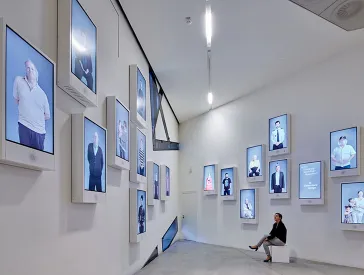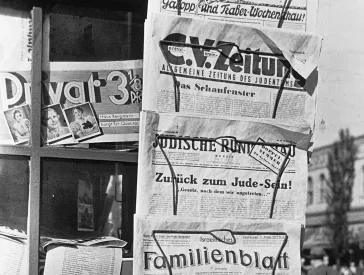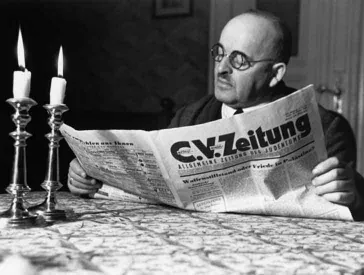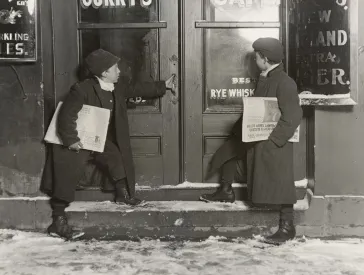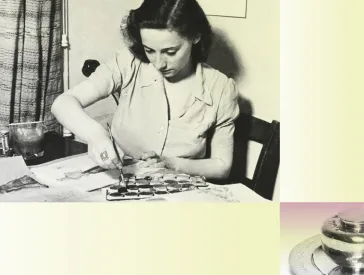Exhibition Opening Defiance: Jewish Women and Design in the Modern Era
Press Release, Thu 10 Jul 2025
The exhibition presents the biographies and works of twentieth-century Jewish women designers who are largely forgotten today. The JMB gives new visibility to their artistic and entrepreneurial achievements and their positions within early twentieth-century German society’s processes of emancipation and modernization – as women, as Jews, and as artists.
- Contact
-
Dr. Margret Karsch
Head of Press
T +49 (0)30 259 93 419
presse@jmberlin.de
- Address
Jewish Museum Berlin Foundation
Lindenstraße 9–14
10969 Berlin
With around four hundred exhibits by more than sixty designers, this is the world’s first collective exhibition on the theme. It brings together pioneering women who battled social marginalization to achieve outstanding positions in their own fields, until the Nazi regime destroyed their careers and lives. Some managed to escape Germany and start afresh abroad.
“Almost all, however, were excluded from the history of German art and culture,” observes the curator, Michal Friedlander. “Through the exhibition, based on many years of research, the JMB is restoring these women artists to the place that they deserve.” Among the better-known names are Anni Albers, Friedl Dicker, Maria Luiko, Emmy Roth, Irene Saltern, and Tom Seidmann-Freud. Visitors will encounter a broad spectrum of design and craft techniques, from goldsmithing and textile art, via ceramics and woodcarving, to fashion design and graphics.
“Most of the artists featured in the exhibition are unknown today,” says Hetty Berg, the JMB’s Director. “As well as highlighting the aesthetic quality of the exhibits, the show also tells the story of the particular conditions under which they were made and the often abrupt end to their production. In that way, it emphasizes the specificity of German-Jewish women’s contribution to the history of the applied arts.”
Pioneers in their time: From the turn of the twentieth century to the present day in ten chapters
Around 1900, women in Germany were structurally disadvantaged compared with men even more than today. Their rights in marriage and family life were restricted, and they could not choose their training and profession freely. The examples in the introductory chapter reveal the Defiance that women needed to overcome these obstacles. The second chapter tells the stories of Trailblazers who challenged not only conservative values in society as a whole, but also the values that prevailed within their own Jewish environment.
The third chapter, Design Education, focuses on the severe limitations to educational and career opportunities for women in design. Women were not admitted to most art academies in Germany until 1919. Just a few institutions offered vocational courses for young women. Jewish women were disproportionately well represented in these sites of artistic training.
A modern consumer economy was one of the defining features of the Weimar Republic, creating new opportunities for product designers. This is the theme of the next chapter, Commodity Cosmos. As craftswomen and entrepreneurs, Jewish women ran small home businesses, designed for manufacturers, or worked in family firms. They both generated and served the demand for modern everyday products and for Jewish ritual objects.
The advertising industry was growing, and there was work for women designers in the areas of poster design, book design, and typography. As fashion designers, illustrators, and boutique owners, Jewish women and their ideas on female self-representation were instrumental in creating a modern visual culture. The “New Woman” embodied a new kind of femininity: the single, professional, emancipated woman who made daring fashion choices. In the chapter Fashioning Identities, the exhibition shows how Jewish women influenced fashion trends in Germany. But though women aspired to independence, Making a Living through their crafts alone was rarely possible, as a further chapter reveals. Women had to rely on support from their parents or husbands.
As progressive educational reform began to take hold in Germany, teaching materials were adapted to meet children’s needs more closely; this is the topic of the chapter The Jewish Playroom. Jewish communities saw their members drift away from religious life, and came to recognize the important role of educational materials in fostering children’s Jewish identification and self-confidence. Women took the lead in this niche market, creating child-friendly teaching materials, illustrating children’s books, and marketing their own products.
The situation changed for the worse from 1933, with Jews in Germany facing existential threats of Restriction, Marginalization, Upheaval. Fall 1941 saw the beginning of mass deportations and the mass murder of the European Jews. The chapter Into the Dark testifies to exclusion and persecution, imprisonment, and death, but also the diverse strategies of resistance pursued by Jewish women in design.
Whether they were living in Germany after the end of the war or had succeeded in settling abroad, Jewish craftswomen faced New Realities. The exhibition’s last chapter traces how, emotionally burdened if not deeply traumatized, they had to forge their paths without the benefit of their former business and social networks and renegotiate their Jewish identity under the changed circumstances. To sidestep the language difficulties they faced in their new countries, refugee women often made their products at home. In most cases, they had to develop a new style, finding that their previous work was not to the taste of the new customers. The pressure to adapt weighed heavily on them from the outset – and is one of the reasons why their names and works found no place in the history of art.
The realization of the exhibition was made possible by funding from the Hauptstadtkulturfonds.
We also thank the David Berg Foundation for its kind support.
Media partners: radio3, Yorck Kinogruppe
Exhibition dates: 11 July–23 November 2025
Location: Jewish Museum Berlin, Old Building, Level 1
Admission: € 10 / reduced € 4
The exhibition catalog (in German) is published by Hirmer Verlag (304 pages, 250 color illustrations, price € 39.90) and available in the JMB Shop and bookstores.
For the latest information on the exhibition, visit:
https://www.jmberlin.de/en/defiance-jewish-women-and-design-modern-era
